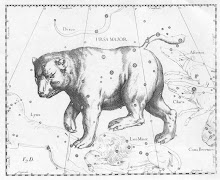What do Toronto and Des Moines have in common? Yes, they were both on my travel itinerary,
as I had the opportunity to speak in both cities about STEM education and
outreach, and my Space Grant experiences over the summer. Des Moines was the site of the Great
Midwestern Regional Space Grant meeting, with presentations by each of the
eight member state Space Grant Consortia.
Toronto, you might guess, was a bit bigger: the 65th
International Astronautical Congress. In
fact, both talks highlighted an even more unlikely location: Arco, ID (the
first city in the world powered by nuclear energy, back in 1953) and Craters of
the Moon National Historic Monument and Preserve (CRMO NMP). My trip to Idaho was part of a project known
as FINESSE: Field Investigations to
Enable Solar System Science and Exploration.
The goal of FINESSE is to manage an important level of scientific and
engineering integration: conduct real planetary science research (in this case,
behavior and characteristics of volcanic flows) while also developing improved
understanding of human spaceflight exploration capabilities in analog research
environments. CRMO is no stranger to
NASA, having been the site of several training missions for a number of Apollo
astronauts (including Purdue alumnus Gene Cernan). And though I could not tell my a’a from my
pahoehoe before leaving Indiana, I was a member of the research team on the
exploration side. Magically and
wonderfully, this is the sort of research I have been working towards my entire
career: examining group-level information flow and task coordination for
expedition-class spaceflight teams.
An unexpectedly rich element of the FINESSE project was STEM
outreach to the general public. The team
set up our LIDAR and differential GPS base units at the edge of a scenic
lookout; while members of the team and I scrambled over the lava flows, members
of the public could (and did) just wander up to us and ask questions about what
we were doing. On “Media Day,” a general
public outreach opportunity set up by the Idaho Space Grant Consortium (of
which CRMO is an affiliate), a few of us got to present to a standing-room only
crowd about the FINESSE research and why it is important and helpful for
understanding planetary processes as well as the local features of this
fantastic national monument and wilderness preserve. What is perhaps more striking is that, for
most of these interactions (including my impromptu talk to a few visitors outside
the visitors’ center that morning), people were not coming to CRMO with a
directed focus on NASA, spaceflight exploration, or the breadth of STEM
research and engagement. This is not a
trivial matter, and I was reminded (thanks also to other presentations in Des
Moines) of how significant the gap is between those of us who do STEM for a
living, and those in the general public who may not be aware of “how STEM gets
done”. Think of being at a party, and
you’re talking to someone who is droning on about “their favorite thing” in a
way that only those who also have that
topic as their own “favorite thing” would understand or care at
all.
If you’ve interacted with me at all, you know that I have a
lot of enthusiastic passions and responses to STEM, rocket science, and long
duration space flight. But the challenge
for me comes from a reminder of both my doctoral research (also in the National
Park Service) and the Media Day at CRMO.
This is the concept of “STEM Interpretation”: when a visitor comes to
your site, they may have questions about what they’re seeing, and why it’s
important. The park ranger’s job is to
make a connection, and tell a story about the park’s resources and important
features: to interpret those features and resources in the context of the
visitor’s life. Now, I can spend a lot
of time talking about differential equations and stability factors affecting
benefit / cost ratios of information gain and sensemaking effort… but that’s
not really interpretation. That’s my
story, my favorite thing. How do we broaden this into an interpretation
story? Well, starting with advanced
mathematics probably isn’t the best way to start. Instead, and as I am hearing at the Toronto
conference, there is a strong value to connecting to “what does this mean for
us,” wherever that person happens to be now.
What if we turned off space technology for a day? How would that affect their lives? (No satellite TV, no location options on your
cell phone… wait, no cell phone!) That’s
an interpretation effort.
In essence, STEM Interpretation is a broad, accessible
approach to connecting stories to people where they are, not just where we
are. There is an interest in these
topics among the general public, but this interest is also tempered by
significant gaps in understanding. As
one of the Toronto speakers highlights from his experience with being
interviewed about his role in analog research, people can connect to the human
side of STEM. Not everyone connects to
the mathematical or technical details of how STEM happens, and those details can
seem very far away. Interpretation
doesn’t mean that we make the public do all the work, or require them to
get excited in exactly the same things. Maybe it’s just a case of helping a variety of
people find their thing to get excited, to create a new group of people with a
favorite STEM thing, and maybe even a new list of favorite things that we help
them find and favor. Because, in the
end, interpretation is also about creating new stories, and sharing those stories
in new ways.





No comments:
Post a Comment